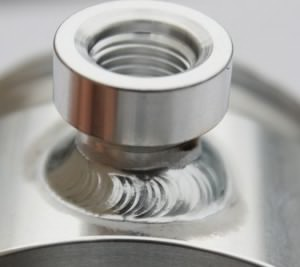Most Common Applications Of Orbital Welding
 The process of orbital welding got its name from the fact that an electrode rotates around the stationary product that is being welded. As with tungsten inert gas welding (or TIG welding), an electric arc is produced between a non-consumable tungsten electrode and the metal that is welded. The weld pool is made up of the base metals themselves. Orbital welding is especially valuable in applying quality welds to tubes and pipes, as well as other difficult or complicated welds.
The process of orbital welding got its name from the fact that an electrode rotates around the stationary product that is being welded. As with tungsten inert gas welding (or TIG welding), an electric arc is produced between a non-consumable tungsten electrode and the metal that is welded. The weld pool is made up of the base metals themselves. Orbital welding is especially valuable in applying quality welds to tubes and pipes, as well as other difficult or complicated welds.
Since its birth in the 1960s, orbital weld systems have since then evolved to cater to the growing needs and technologies through time. Today, they have computer programs that can store welding parameters in memory. This basically allows the skills of a certified welder to be programmed into the system, allowing the on-going production of identical welds, and virtually eliminating welder error and defects.
The commonly used 300-series stainless steels offer a high degree of weld ability using orbital equipment, except for types 303/303SE, which allow for machining ease. The 400-series stainless steels, while weldable, may require post-weld heat treatment. Welders adjust the orbital-welding setup to accommodate for potential differences among material heats.
Other Applications Of Orbital Welding
• Aerospace – The aerospace industry was the first to use automated orbital welding. The high pressure hydraulic systems of a single aircraft can contain more than 1,500 welded joints.
• Boiler-tubes – Boiler-tube installation and maintenance offer perfect scenario for orbital welding. Compact orbital weld heads can be placed in between rows of boiler tubes.
• Food, dairy and beverage industries – This sector of the industry requires consistent full-penetration welds on all weld joints. For maximum piping system efficiency, the tubing and pipe welds must be as smooth as possible. Any defect or incomplete weld joint can trap fluid inside the pipe or tubing, harboring bacteria.
• Nuclear piping – The nuclear power industries severe operating environment, and specifications for high quality welds, has long been a user of orbital welding.
• Offshore applications – Submerged hydraulic systems welded with orbital equipment offer superior corrosion resistance and mechanical properties.
• Pharmaceutical industry – Pharmaceutical process lines and piping systems require high quality welds to ensure a source of water from the tubes is uncontaminated by rust, bacteria and other contaminants. Orbital welding ensures full-penetration welds with no overheating that can affect the corrosion resistance in the welded joint.
• Semiconductor industry – The semiconductor industry requires piping systems with very smooth internal surface finish to prevent contaminant build-up on the tubing wall or weld joints. A build-up of particulate, moisture or contaminant could increase and ruin the batch process.
• Tube fittings, valves and regulators – Hydraulic lines, oil and natural gas storage, delivery systems, and medical gas systems all require consistent quality and defect-free welds. Orbitally welded systems give the means to ensure high productivity of welding and optimal weld quality.
Find Certified Orbital Welding
If you are looking to weld parts for any of the industries listed above – or for any other not found above – look for a certified orbital welding company to do it for you. Ensure that they have certified orbital welders to ensure quality work.

 You MUST Ask BEFORE Hiring a Welding Company – So You Can Avoid Wasting Your Time AND Hard-Earned Dollars”
You MUST Ask BEFORE Hiring a Welding Company – So You Can Avoid Wasting Your Time AND Hard-Earned Dollars” 
Keep in Touch